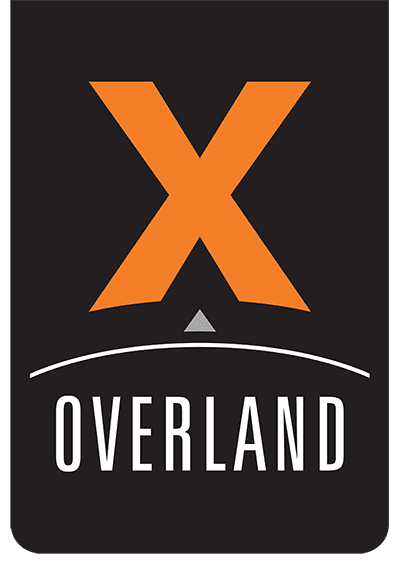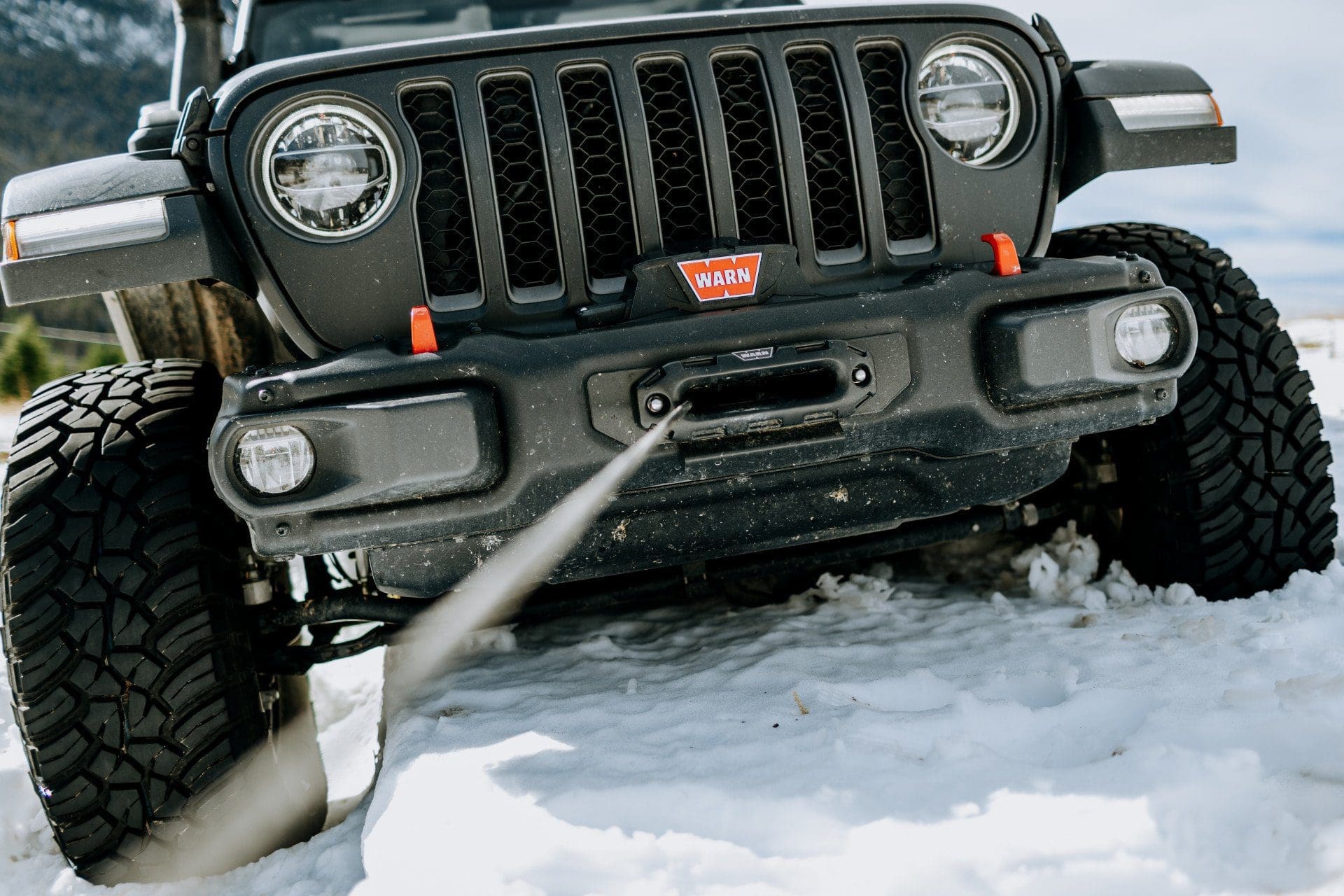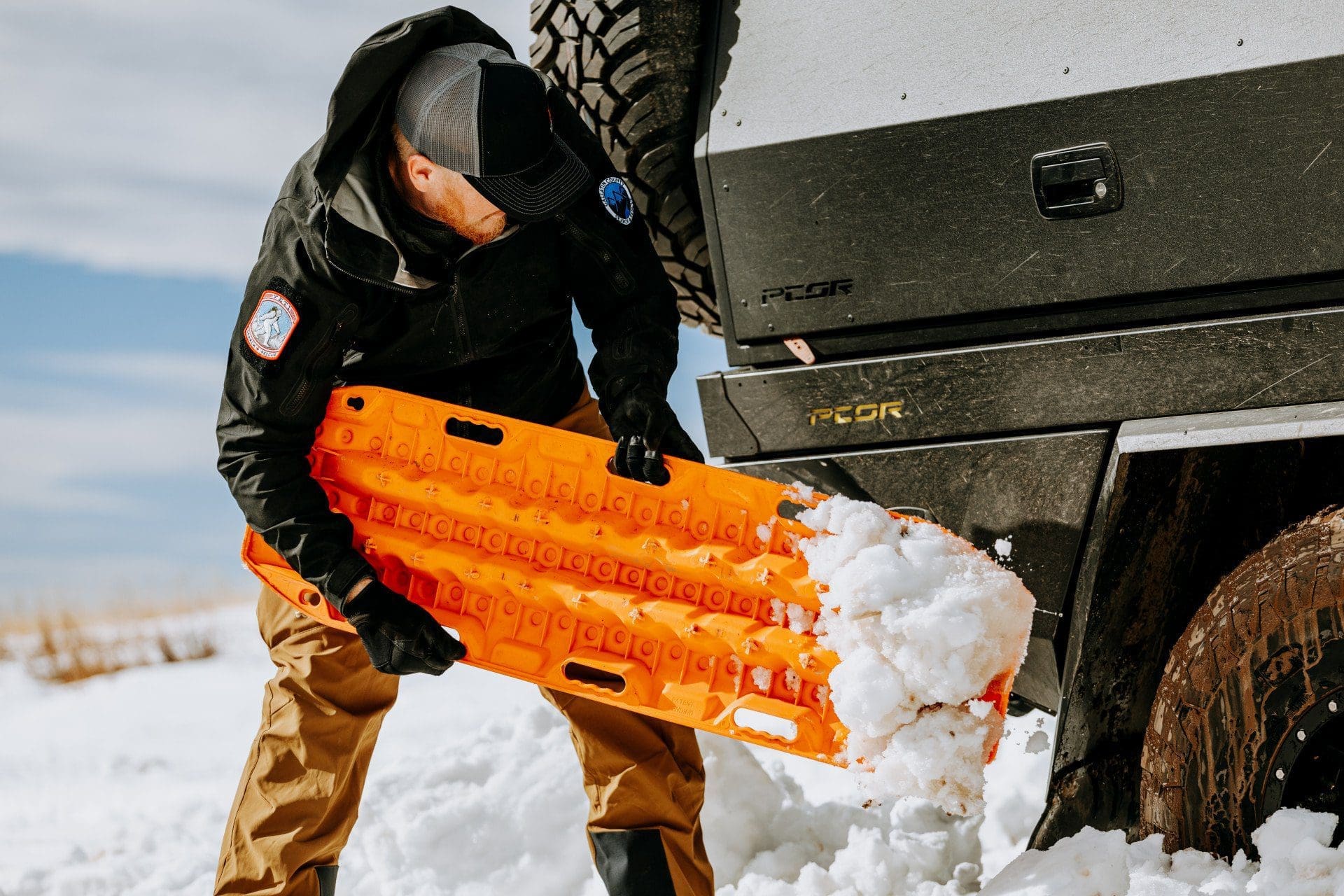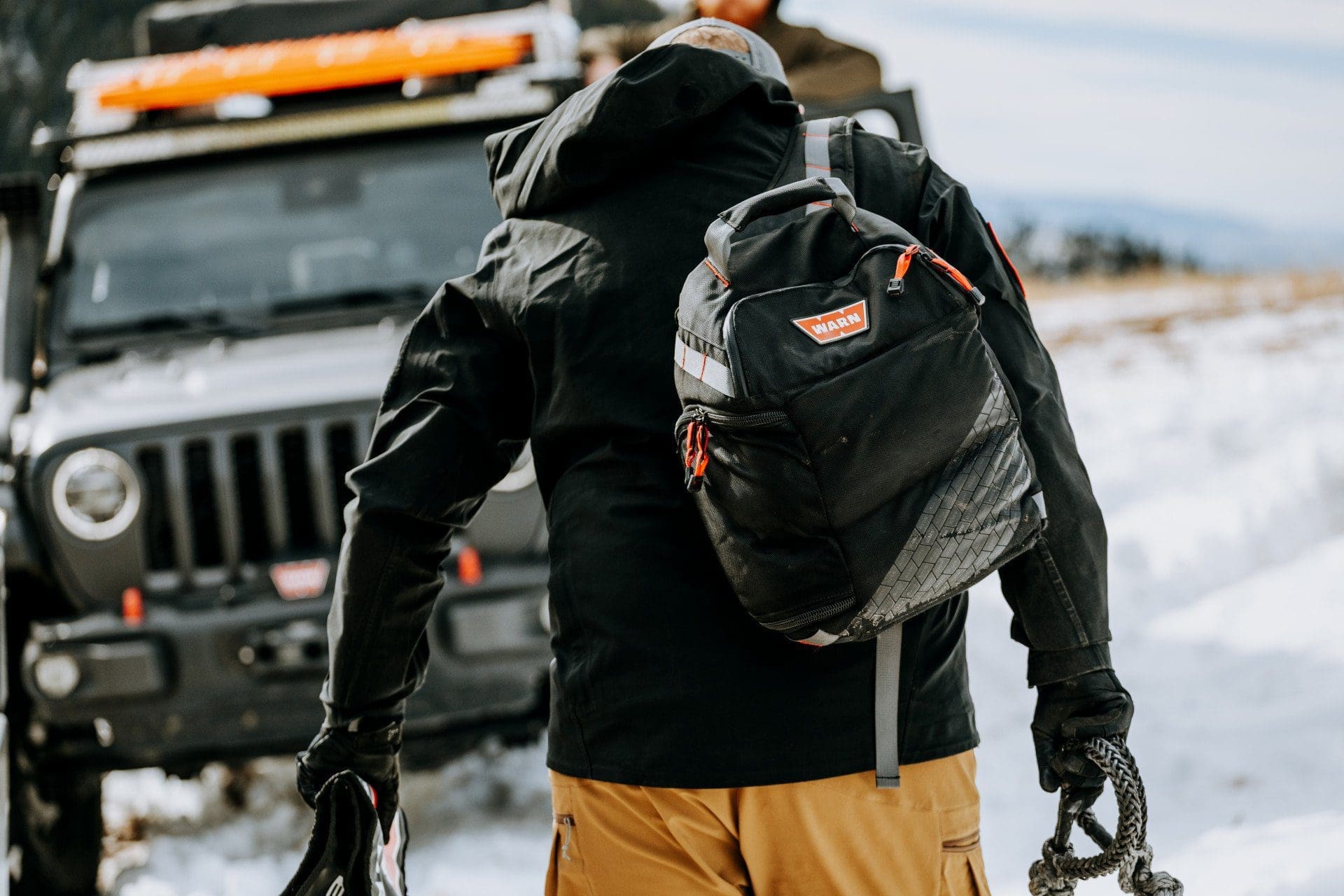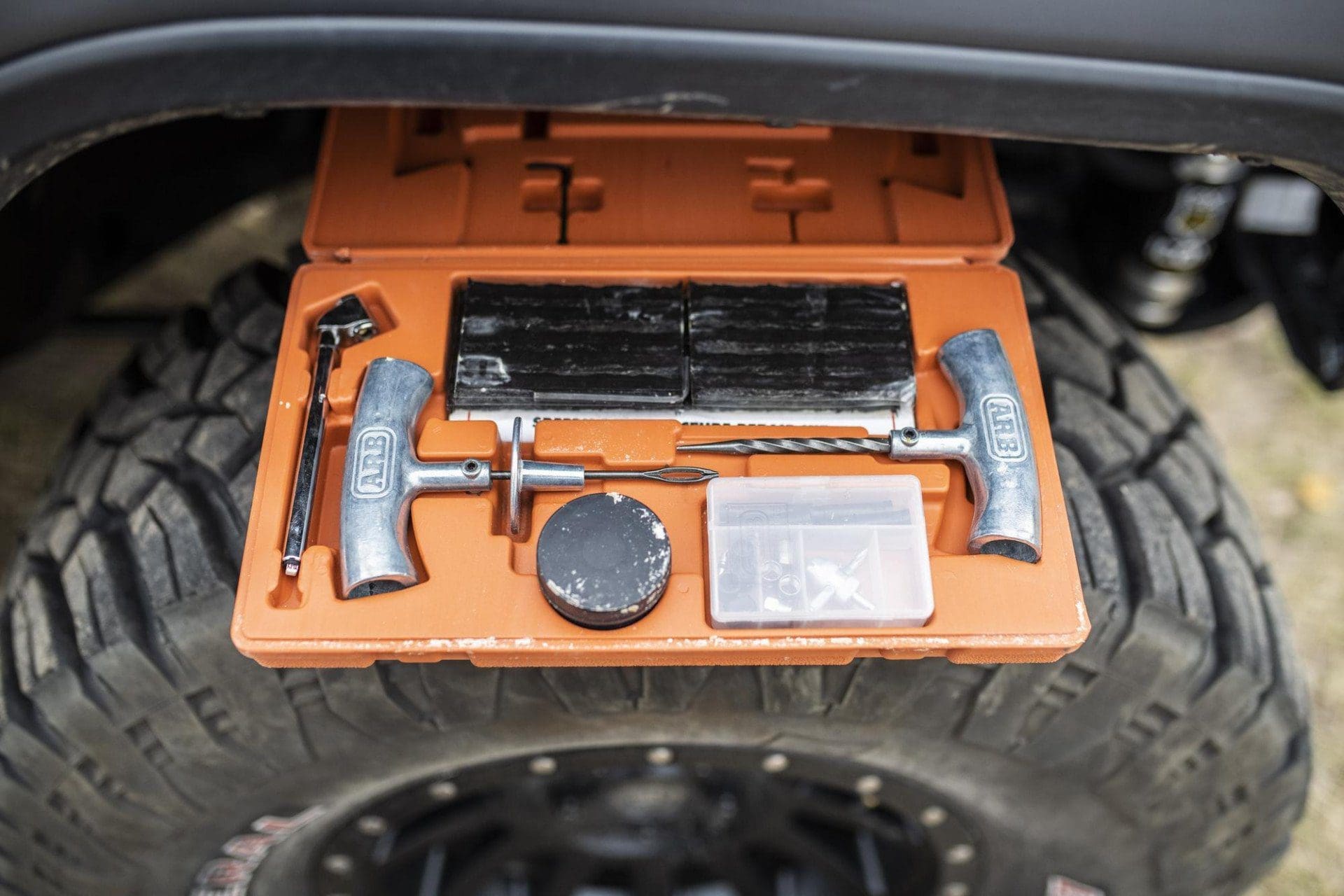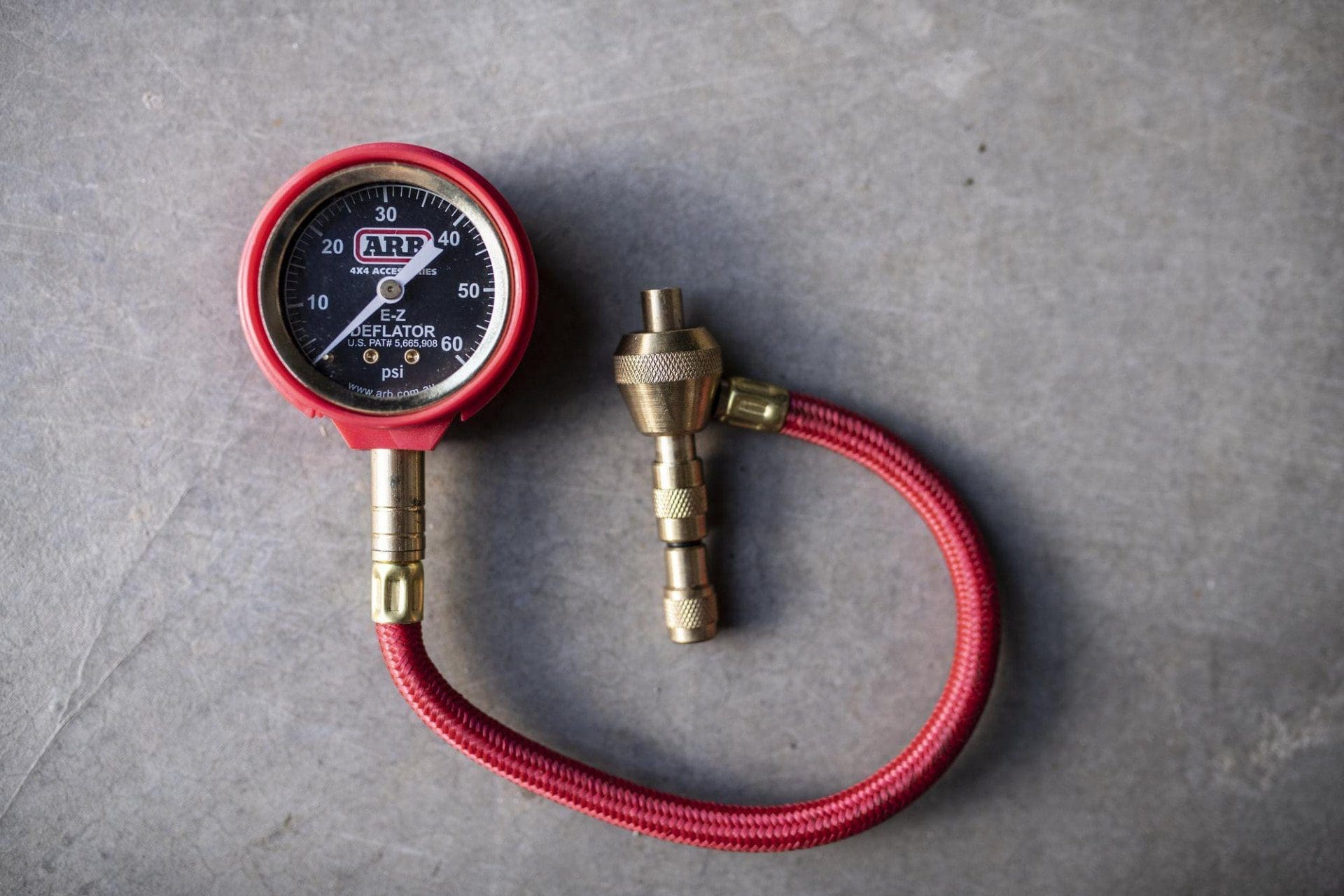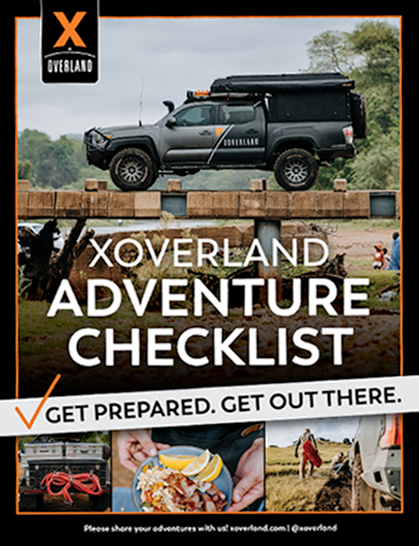

Our Proven Recommendations
We’ve used WARN winches and Maxtrax during on everything from our Central and South America series and to present.
WINCHES AND HOW TO USE THEM
When it comes to vehicle recovery, the winch packs a powerful punch. As one of the most useful self-recovery tools out there, a winch can help recover stuck vehicles from all kinds of obstacles, including mud, snow and ice, and sand.
With great power comes great responsibility, however. Thoroughly acquaint yourself with the user guide, ensure you have a comprehensive winch kit, and learn proper and safe winching techniques before hitting the trails.
We’ve gathered all of our go-to information about winches and how to use them in this post. We hope these tips help those who are looking to buy a winch, instil a sense of confidence in folks who are new to using a winch, and otherwise provide a good reminder about best winching practices. Let’s dive in.
HOW TO CHOOSE THE RIGHT WINCH
When it comes to choosing the right winch, we always follow the advice from our friends at Warn Industries:
Take the gross vehicle weight rating (GVWR) and multiply it by 1.5.
For example, if you’ve got a new Jeep Wrangler Rubicon two door. A quick visit to Jeep’s website shows the vehicle’s GVWR is right about 5,000 lbs. (2,268 kg). Multiply this by 1.5 and you’ll get your minimum capacity. In this case, it’s 7,500 lbs. (3402 kg). An 8,000 lb (3629 kg) capacity WARN ZEON 8-S is a good place to start, but for some extra grunt, you can move up to a 10,000 lb. (4536 kg) winch. Remember, you can always go up in capacity. Warn offers truck/SUV winches ranging from 8,000 lbs. (3402) to 16,500 lbs. (7484 kg).
Is bigger always better when it comes to installing a winch? Not necessarily. If you have a smaller rig, a heavy winch can damage the frame or bumper of your vehicle. When in doubt, call your local manufacturer for advice.
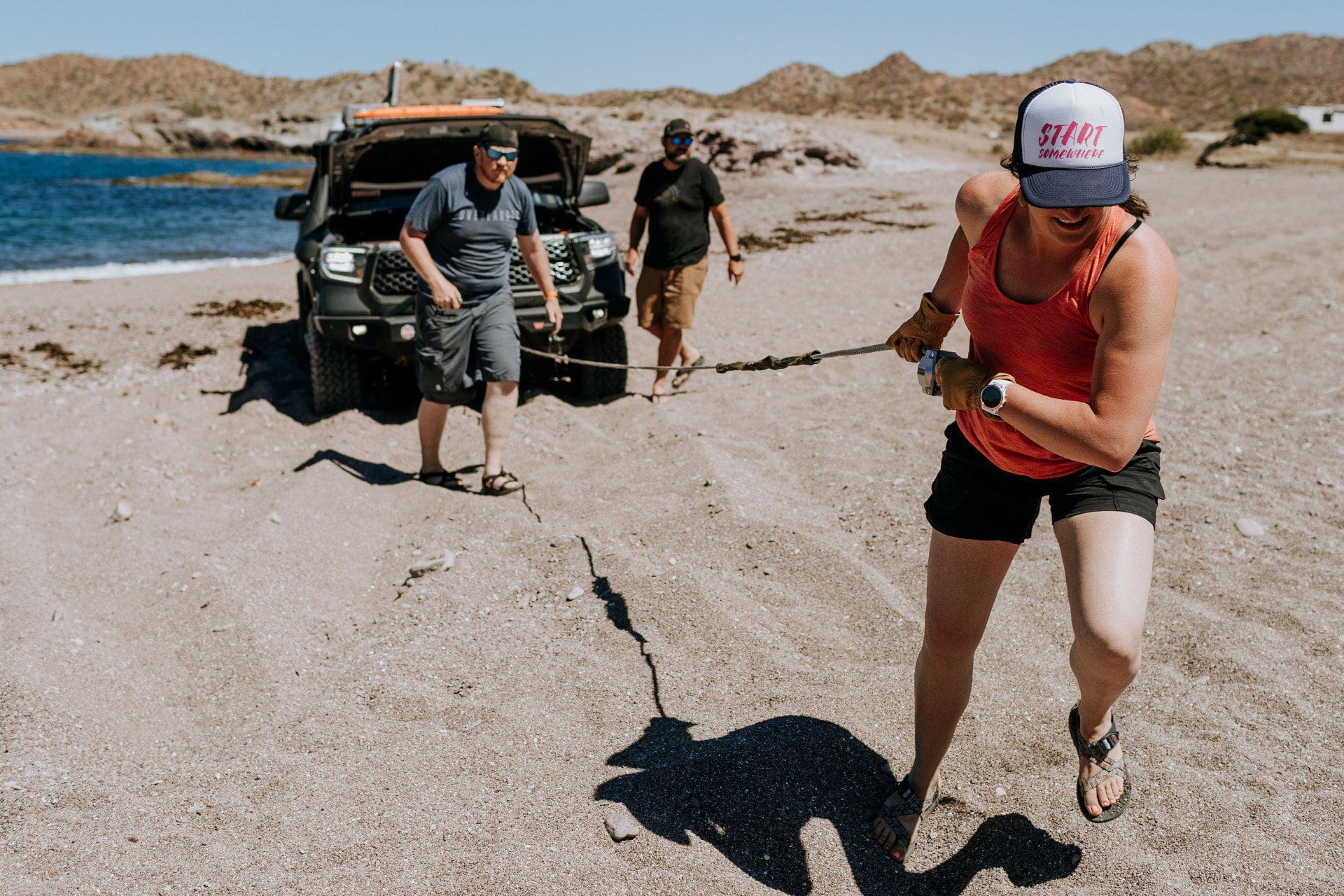
What about steel cable versus synthetic? Each has their pros and cons, so the right choice depends upon how you will be using your winch. Warn has a great blog post on this subject: Synthetic Rope vs. Steel Rope, so we’ve included a few excerpts below:
Steel rope pros: extremely durable, good for both vehicle recovery and utility work such as moving trees, rocks, etc., since it resists abrasion very well. Ultra-violet wear is not a factor with steel rope, and it may be a better choice for you if you don’t frequently use your winch.
Steel rope cons: heavier than synthetic, can develop rust, and can also develop sharp burrs. This is one reason why we always recommend users wear heavy gloves to protect their hands while handling the rope.
Synthetic rope pros: lightweight, easy to handle, less prone to abrasion (and possible fraying), and doesn’t develop sharp burrs like steel rope, doesn’t store as much potential energy when under load.
Synthetic rope cons: More prone to abrasion and should be regularly inspected for frays or other damage caused by UV, chemicals, and overall use.

Ultimately, as long as they are in good condition, both steel or synthetic are great choices. It all comes down to how often you use the winch, how you’re using it and how much time you’re willing to put into maintenance. Regardless of choice, be sure to inspect both lines for damage, and never use a damaged winch line.
A common misconception is that a dual battery system is required to operate a winch. Although a dual battery system leaves one battery for starting the vehicle and other for accessories such as starting the vehicle and another for accessories such as winches, it is not required. Warn usually recommends a 650 cold-cranking amp battery to use with any of their winches.
WINCHING TECHNIQUES
Once you’ve purchased and installed your winch, it is important to develop a good understanding of proper winching techniques. Warn offers an excellent printout called The Basic Guide to Winching Techniques, which outlines winch components, mechanics, required accessories and maintenance. The guide also illustrates the basic winching techniques.
Want more? Check out the following Episodes of “Oh Hey There” With Jeff:
Episode 18 | Winching: Single Pull Line
Episode 19 | Winching: Load Reduction and Single Snatch Block
Episode 20 | Winching: Two Snatch Blocks
Episode 21 | Winching: Two Vehicle Pull and Snatch Block and Re-Spool
REGULAR WINCH INSPECTIONS
Just like ongoing vehicle maintenance, winch and winch accessories require a regular one-over to work optimally. These are quick checks that can prevent things from going south during a recovery. Put eyes on metal hardware such as snatch blocks, to ensure the bearing is spinning freely and there are no dings or burrs in the groove of the wheel itself. Watch out for stress marks or cracks on snatch blocks and shackles. Look for cuts or frays in your tree saver, and test out any remote controls, if you have them.
Watch Episode 17 of “Oh Hey There” With Jeff: How to Use a Winch Safely >>
EXPEDITION OVERLAND’S BEST WINCHING PRACTICES
Always Wear Gloves
Whether we’re winching with steel or synthetic rope, we always wear a pair of heavy duty gloves. Although synthetic rope doesn’t develop the burrs and barbs that wire rope does, gloves create an additional barrier between the rope and our hands. They also protect our hands from mud, dirt, sticks and rocks found in a tough backcountry recovery scenario.
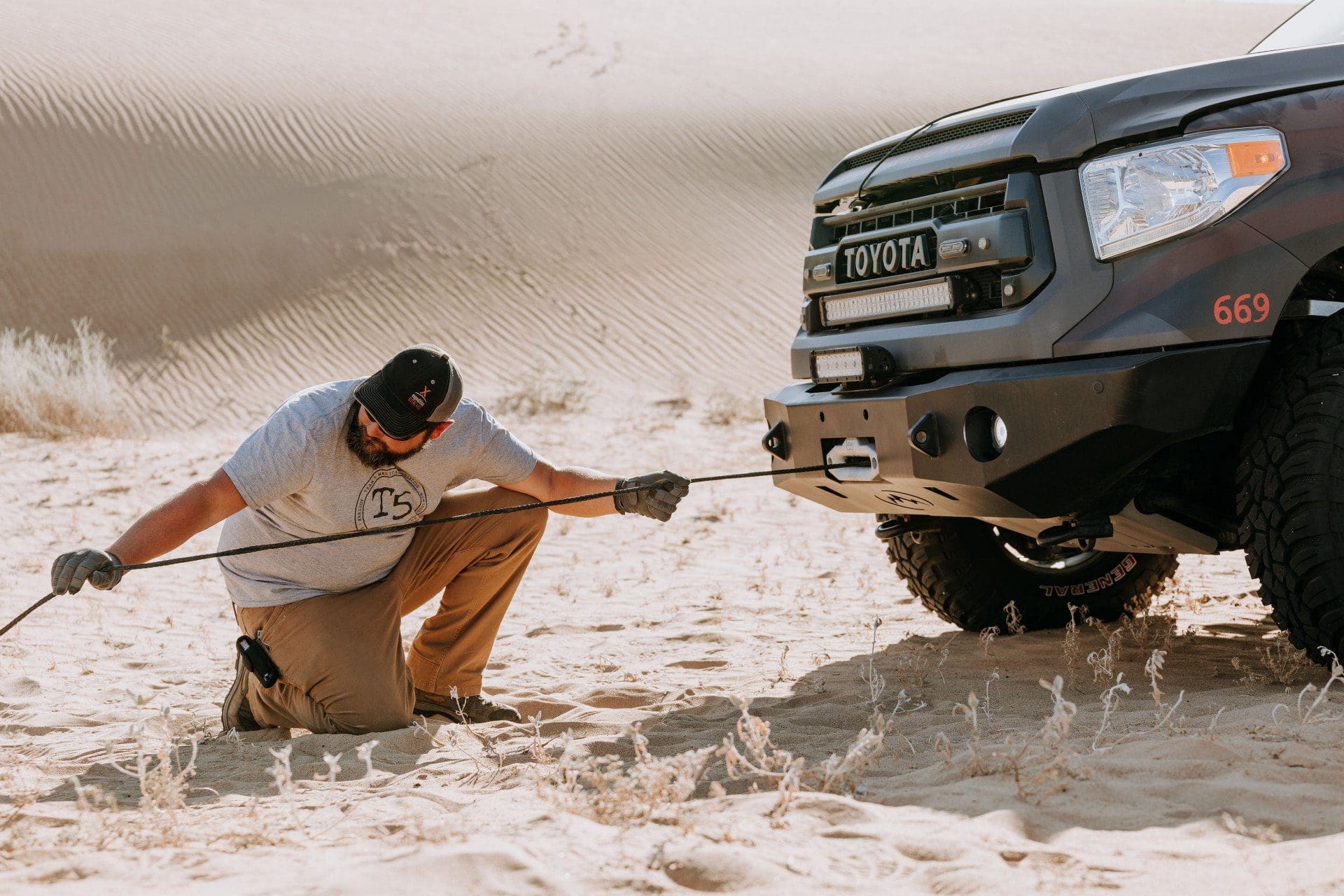
Never Attach a Winch Rope or Strap to a Ball Hitch
As our friend Andy from WARN Industries says, “1,000 No’s.” Hitches are designed for a constant load, not for winch and shock loads. Never attach a winch rope or strap to a ball hitch as the ball hitch can break off and propel towards you or another person, causing serious injury or fatality.
Choose Good-Quality Recovery Gear
Purchase recovery gear from well-trusted sources. Cheap recovery gear, for example shackles, snatch blocks or receiver brackets can be cast, and if those cast parts are made cheaply, they can have air bubbles in them. Air bubbles weaken the structure and can lead to warping or failure.

Never Tow With a Winch
While winches are great for pulling vehicles out of stuck situations, they aren’t made for shock loads such those created when towing. Slack can develop during towing, which quickly transforms into tension. That tension can send the load back through the winch and into the gears, potentially stripping out the gears.
Use a Tree Strap and Damper
We always want to leave a place better than we found it, so using a tree saver just makes sense! It also extends the life of the winch cable, preventing the need to double the rope back around a tree. We also use dampers, even when winching with synthetic rope, as a quick and easy precaution. As X Overland travels as a team, it is the responsibility of the expedition leader to ensure the safety of its team members, especially in remote locations!
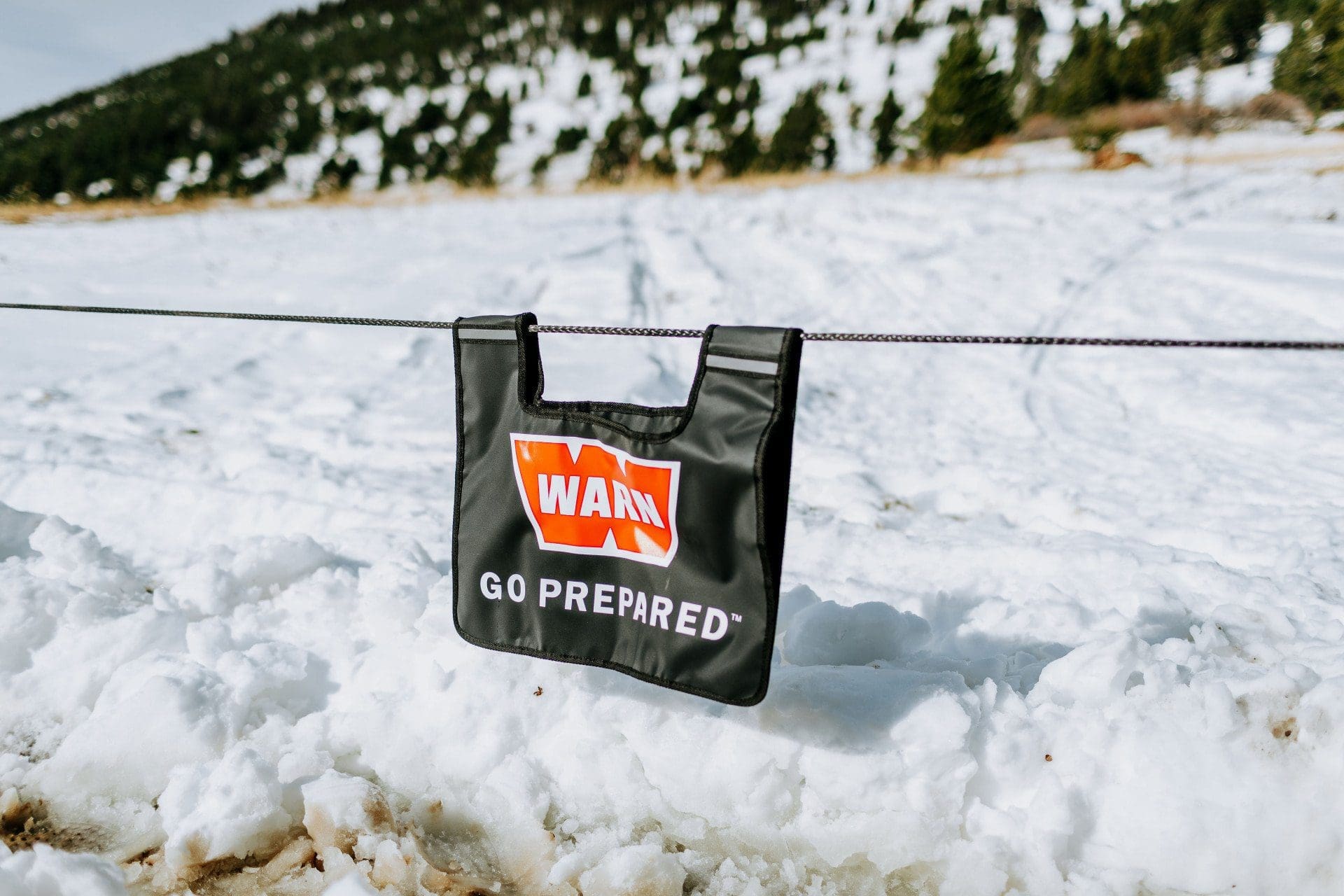
Our last piece of advice is to take your time! Assess the situation thoroughly, keep safe, and you’ll be amazed at how great it feels to carry out a safe and successful recovery.
Looking for additional best winching practices? We chatted with Andy from Warn Industries about winching basics and myths. Check it out! >>
OUR FAVORITE WINCHES AND ACCESSORIES
We’ve been running WARN winches since our Alaska/Yukon expedition, nearly ten years ago. Today always carry our WARN Medium Epic Recovery Kit and run a variety of winches, including: the WARN EVO 8-S (3rd Gen 4Runner), ZEON 10-s Platinum (5th Gen 4Runner), ZEON 9.5xp-S (2016 Tacoma), ZEON 12-S (2016 Land Cruiser), and ZEON 12-S Platinum (2018 Tundra).
What’s new for 2021? All of our winches are being upgraded with WARN Spydura Nightline synthetic rope. The 3M light-activated reflective strands boast high visibility and its Ultra-High Molecular Weight Polyethylene material and protective, high-temperature urethane will be put to the test during this year’s adventures!
